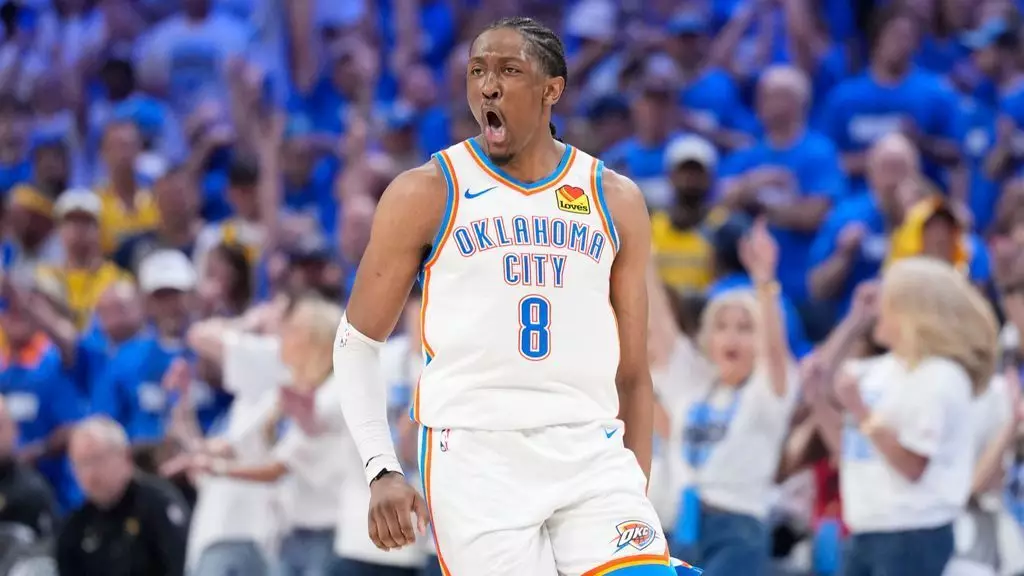Oklahoma City’s recent commitments to their young core represent a bold declaration of intent, but beneath this glittering surface lies a complex web of risks and uncertainties. The Thunder’s decision to lock in Jalen Williams, Shai Gilgeous-Alexander, and Chet Holmgren with multi-year max contracts signals ambition—but at what cost? It’s a classic case of high reward entwined with high stakes. While the franchise positions itself for prolonged contention, critics must question whether this strategy is rooted in sustainable growth or a fleeting illusion of greatness fueled by recent playoff success and lofty financial commitments.
The idea that Oklahoma City is building a dynasty around these three talented players is tempting. Fans and analysts alike are enthralled by their potential—Williams’s breakout role, Gilgeous-Alexander’s superstar ascension, and Holmgren’s promising future. Yet, history warns us about putting too much hope in young talent, especially when they endure injuries and inconsistent performances. The truth is, the NBA landscape is riddled with stories of promising squads faltering under the weight of their own expectations, of contracts that become albatrosses when stars fail to deliver or succumb to injuries. The Thunder’s ambitious moves could backfire if these players do not meet their lofty ceilings or if durable success eludes this particular trio.
Financial Heavy Lifting and the Myth of Flexibility
Oklahoma City’s financial strategy raises eyebrows among those who follow the NBA’s economic landscape. Committing close to $823 million over five years to three young stars signals confidence—but also signifies a team already teetering on the edge of the luxury tax threshold. While the franchise claims to retain some room through non-guaranteed contracts, the reality is that their payroll projections have already skewed dangerously high. This approach echoes a broader trend in the league: teams spending big in pursuit of championships, yet often at the expense of long-term fiscal health.
The notion of remaining flexible with a considerable chunk of non-guaranteed contracts is somewhat illusory. It carries a false sense of security—teams may believe they can pivot if necessary, but in reality, the financial burden they are stacking up could hinder future moves or force uncomfortable trades down the line. Moreover, the reliance on young players with injury histories, like Williams, adds an unpredictable element to this financial gamble. The team’s commitment to long-term contracts might turn out to be a strategic mistake if key players fail to stay healthy or if their development stalls.
The Cost of Prioritizing Immediate Success Over Sustainable Growth
The franchise’s focus on maximizing short-term competitiveness often comes at the expense of broader, more sustainable growth models. Oklahoma City’s recent title success, achieved with a young core, might encourage some to believe in a quick ascent. But history demonstrates that such rapid ascents—particularly founded on aggressive contracts and high payrolls—are often short-lived and fraught with internal and external conflicts.
In their quest to contend, the Thunder risk fostering a culture that rewards immediate gratification over disciplined development and strategic planning. This may lead to injuries, burnout, and roster stagnation as the team struggles to balance star-driven ambitions with the realities of player health and league competitiveness. The danger is that in chasing a fleeting peak, Oklahoma City could cheat itself of the long-term stability that might come from a more measured approach—one that invests in drafting, development, and salary cap discipline rather than merely throwing money at stars.
The Broader Implication for the NBA Landscape
Oklahoma City’s approach exemplifies a troubling trend across the league: the glorification of big spending and star-centric rosters as the path to an elusive championship. It perpetuates a cycle where franchises feel compelled to keep up with each other financially, often at the expense of genuine team-building or sustainable long-term strategies. This arms race fuels a skewed perception of success, distracting from the foundational elements of effective management—balance, discipline, and patience.
This strategy also raises questions about the league’s overall health. If every team feels pressured to chase stars with colossal contracts, the disparity between the haves and have-nots widens, risking destabilizing competitive balance. For fans and critics, this makes one wonder: is this obsession with star power and financial firepower ultimately a superficial fix? Or does it threaten the integrity of the league by incentivizing reckless spending and short-sighted window-dressing instead of thoughtful, strategic franchise development?
While Oklahoma City’s aspirations are commendable—driven by youthful talent and a feverish desire for championships—their approach is arguably short-sighted and fraught with peril. Whether this gamble pays off remains to be seen, but what’s certain is that the path they’ve chosen exemplifies the precarious allure of star-centric, high-cost basketball—and the danger of chasing quick fame at the expense of sustainable league health.


Leave a Reply